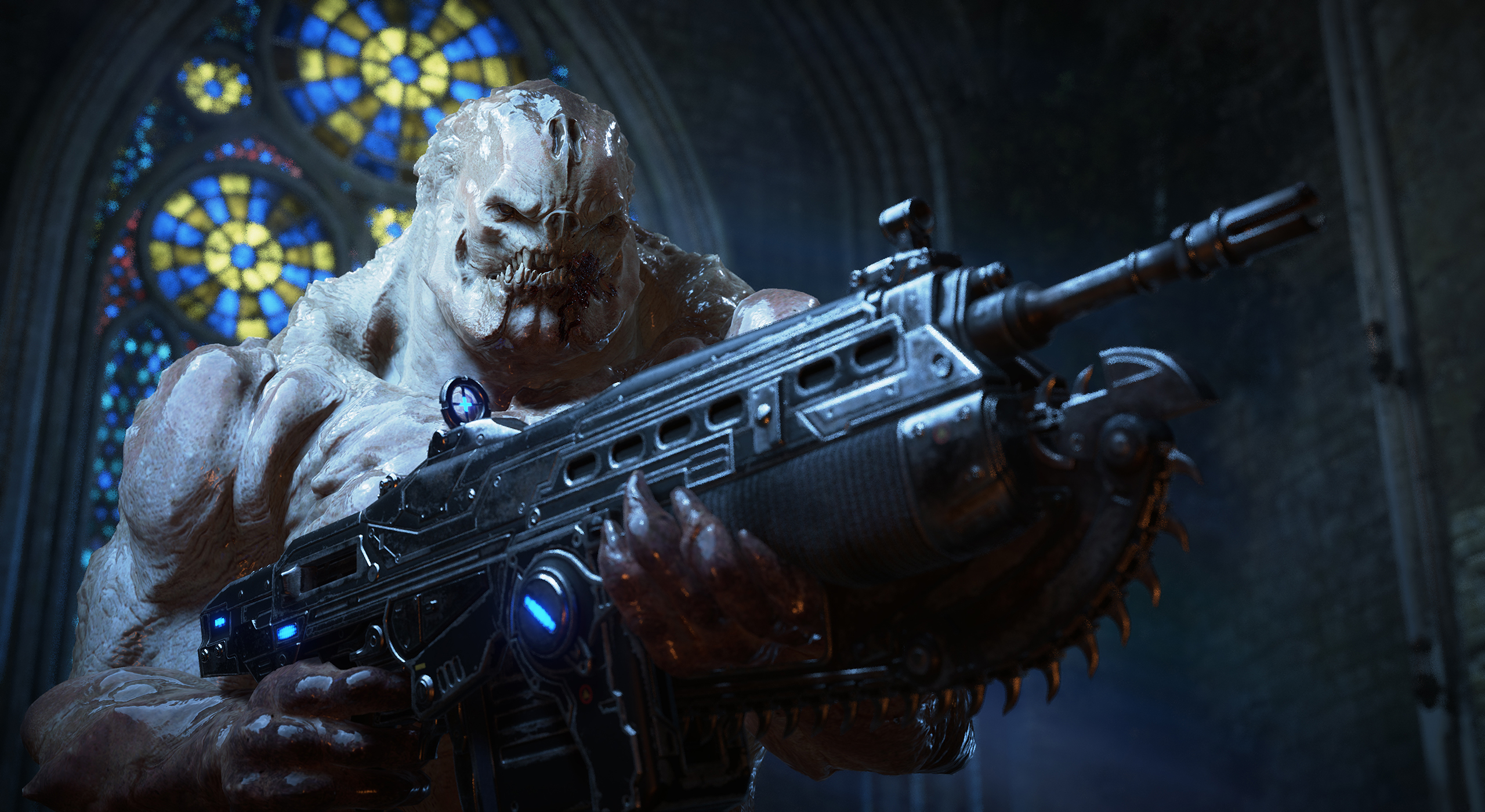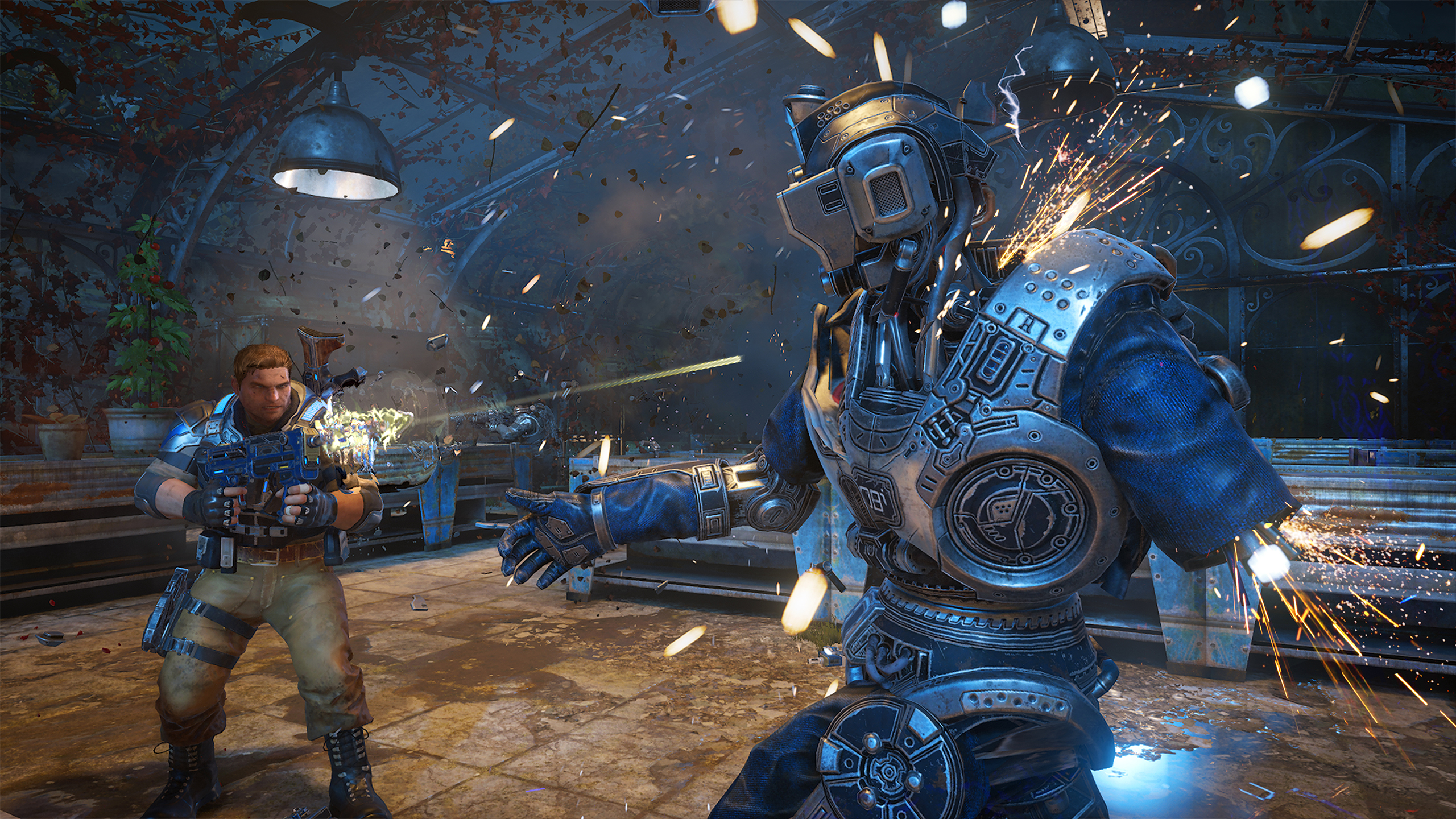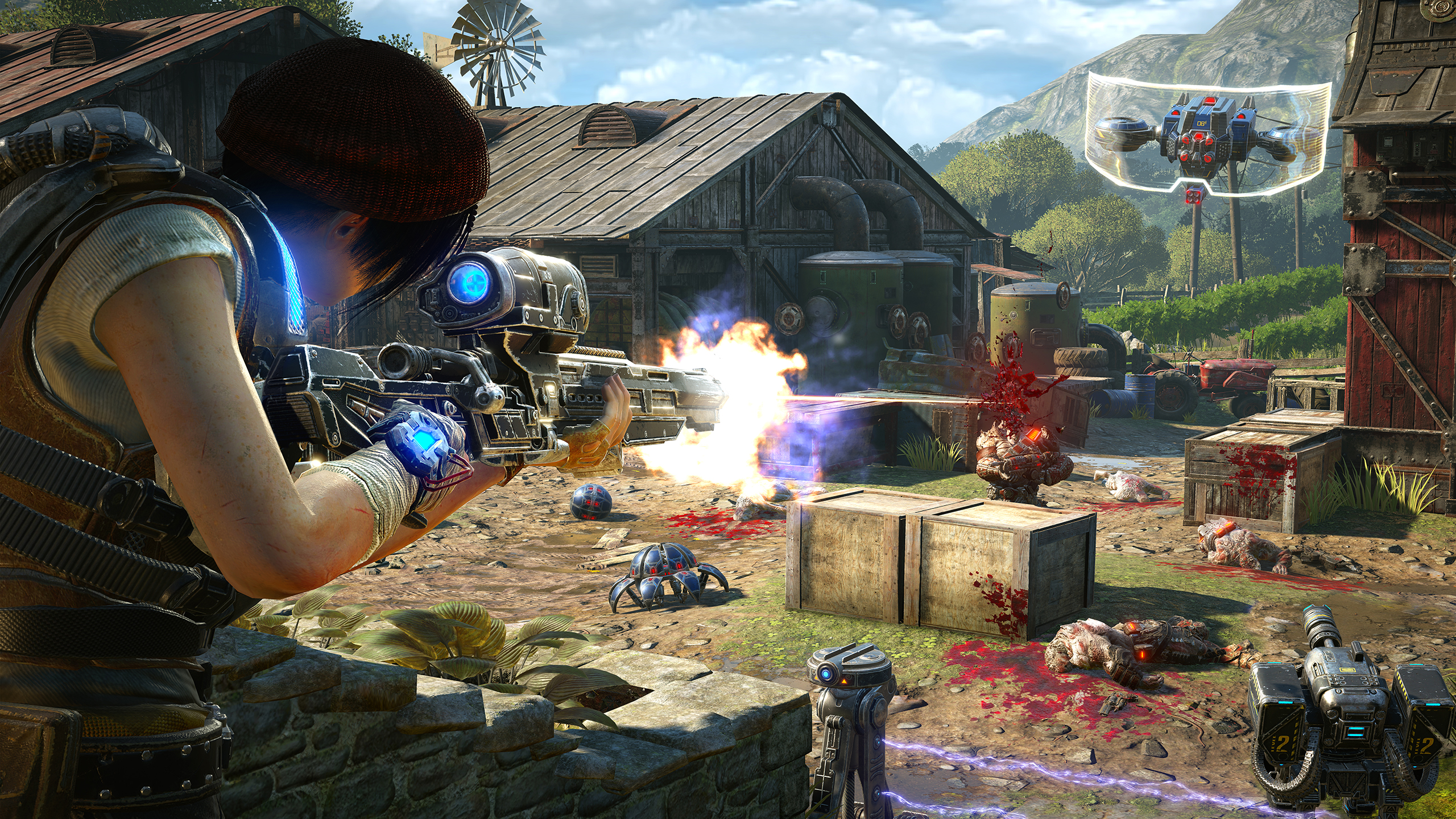
Last week I played Gears of War 4 on a 3440x1440 ultrawide monitor with maxed out graphics settings, an increased FOV, and a mouse and keyboard. After the Gears of War Ultimate Edition’s extremely rough launch, I never expected to be playing Gears of War 4 in the most ‘PC gaming’ way I could imagine just half a year later. But there I was, and not only was it running great, it was whole a lot of fun.
To be fair, the PC I was using had a GTX 1080 GPU, an i7-6950X CPU, and a whopping 64GB of RAM, so I’d be surprised if it didn’t run any game like butter. When I turned off v-sync and used Gears of War 4’s built-in benchmarking tool (which provides a surprising number of stats, and even a fancy graph) it ran at an average of 84 fps. Other than a couple of larger frame hitches during the campaign, I rarely saw it dip below the monitor’s 75hz refresh rate.
It turns out that the Ultimate Edition’s failure was what pushed developer The Coalition not to repeat its mistakes with Gears of War 4. Technical director Mike Rayner told me they “learned a lot” from the process of releasing Ultimate Edition and then subsequently having to fix it, and that they handled Gears of War 4 differently as a result. “We’ve really treated it as a first class, fully focused PC title from the get go,” Rayner said, “It’s not a port of the Xbox, we have a dedicated team for the PC and we’ve put a lot of love and effort into it.”

He also noted that they’ve been testing the game across a wide range of hardware configurations, not just the admittedly overpowered monster PC I was playing on, and have been working with both Nvidia and AMD on driver support. It’s impossible to tell from my demo if any widespread performance issues will pop-up at launch, but speaking with the technical team and playing Gears of War 4’s PC version in this setting was encouraging.
"It’s not a port of the Xbox [version], we have a dedicated team for the PC"
Mike Rayner, technical director
I’m excited to play more of it on PC. The signature ‘stop-n-pop’ cover shooting was a refreshing change of pace now that most shooters have drifted away from the mechanic that Gears of War popularized in 2006. While hopping from cover to cover was a little trickier without a controller, it was full of interesting choices to make about when it was safe to move up and where I was the best place to move next.
Despite the campaign levels being entirely linear, each combat area felt like it had a few different paths I could take. I could sit back and snipe down larger targets before moving up, run down the center and post up in the thick of things, or jump between barricades until I got around enemy’s lines to flank them from the side. And while I didn’t get to play any co-op—which will be available in split-screen co-op, a rarity on PC—it was clear every level was designed with it in mind, and that these different strategies probably work best when used in tandem.
The Coalition also uses enemy design to push you into different playstyles. The first part of the campaign I played was spent fighting robots that would often fearlessly march towards me instead of taking cover, letting me hunker down and pick them off, while the second part was against small, fast moving monsters called Juvies that would quickly root me out of wherever I was hiding. For that section, I barely took cover and hardly even aimed down my sights as the Juvies were easier to kill from the hip. These alternating enemies helped stop the game from becoming too repetitive, as most combat areas could be summed up as ‘an open space with a series of small walls.’
The biggest gaming news, reviews and hardware deals
Keep up to date with the most important stories and the best deals, as picked by the PC Gamer team.
Gears of War 4 looked noticeably worse when I briefly switched over to playing it on an Xbox One for part of my demo. Aliasing on corners of objects and hair was distracting and the framerate looked sluggish by comparison. The PC is shaping up to be the best version of the game, despite Gears of War 4 still being locked to Windows 10 and its UWP. But it’s clear The Coalition cares about the launch experience of its PC audience this time around.

Studio head Rod Fergusson told me they see this as an opportunity to “do it right” on this game. “I would argue that Gears 1 in 2007 was very much a ‘let’s just port it over as quickly as possible’ Games for Windows Live kind of thing,” Fergusson said, ”whereas here’s all these settings you can do, and the depth of configuration you can do is something that our engineering team is really embracing.” The graphics options are indeed extensive, and there’s even an advanced setting that will dynamically scale the game’s resolution down (to a cap you set) in order to maintain a constant fps, a feature I’m excited to test out the potential of on lower-end machines.
Whether or not Windows 10 UWP restrictions, unforeseen driver issues, or just simply weaker graphics cards cause issues for Gears of War 4 is still a big question, but it’s a question I’m significantly less worried about than I was a week ago. In a time where it feels like no major PC game can make it out the door without performance problems, it’s nice to see a developer adapting from their past mistakes and not leaving the largest gaming platform in the world by the wayside.


